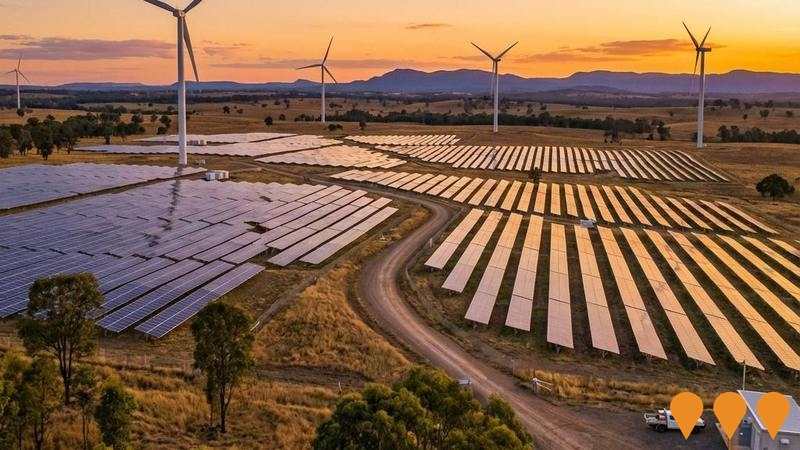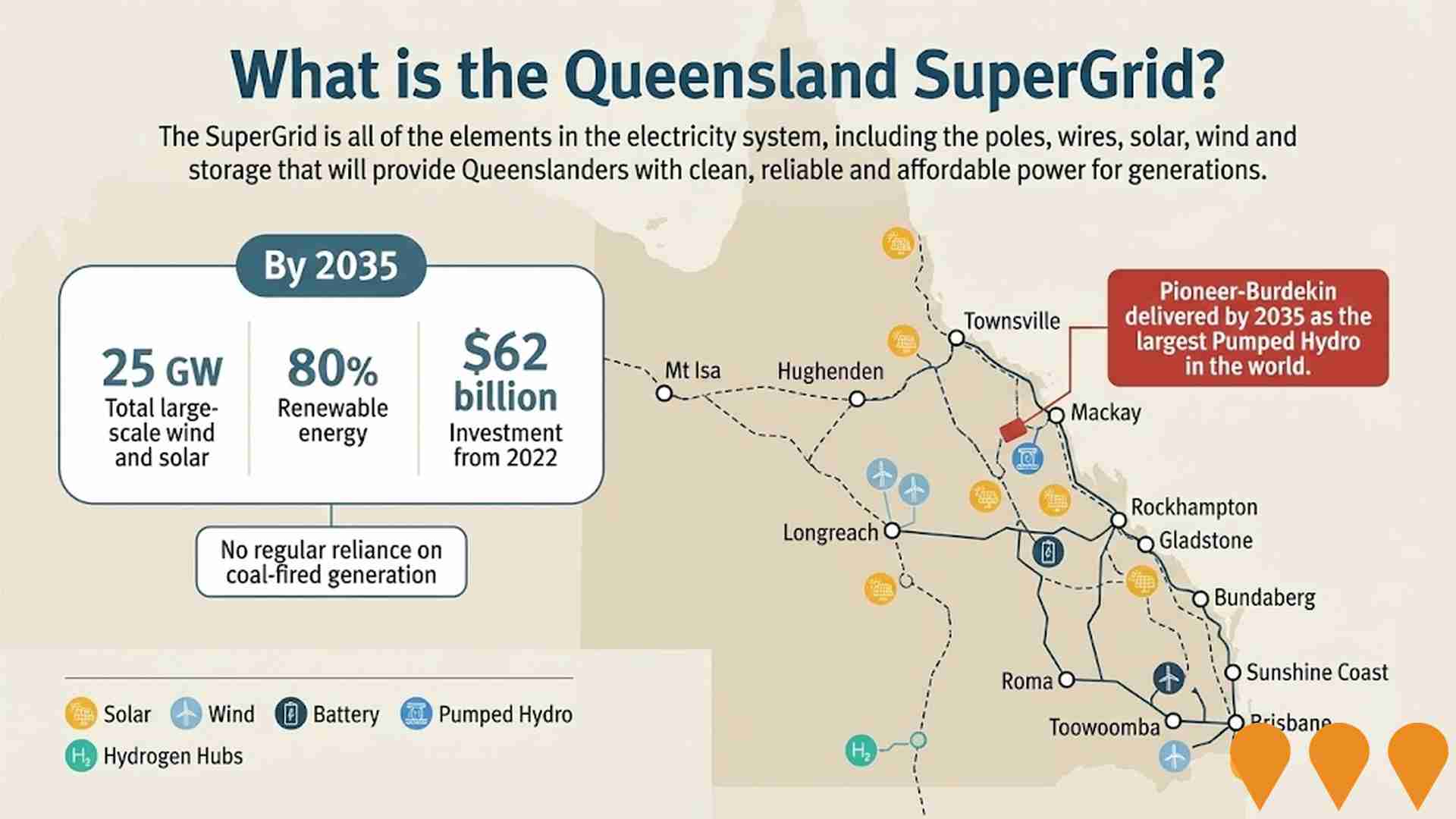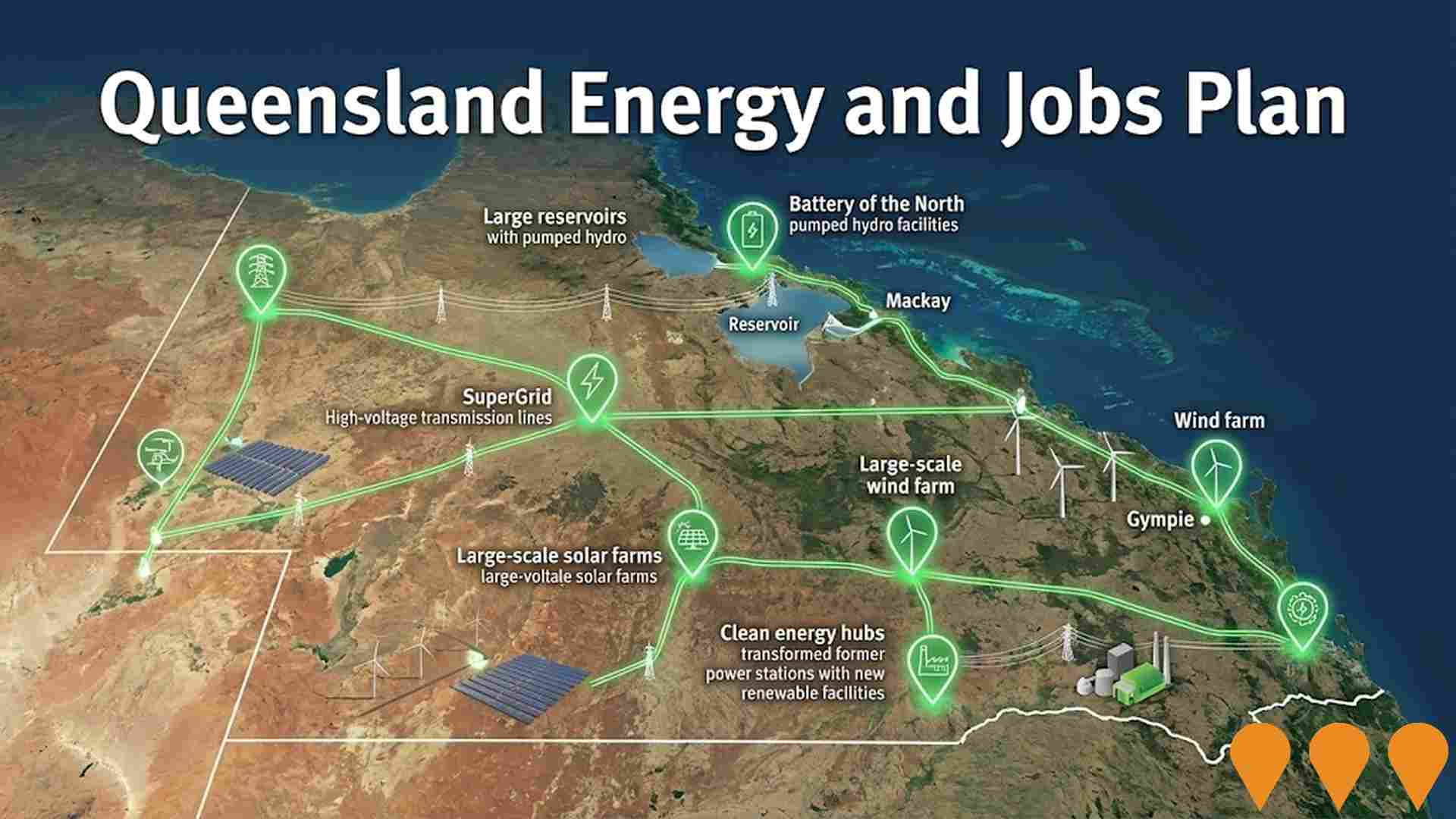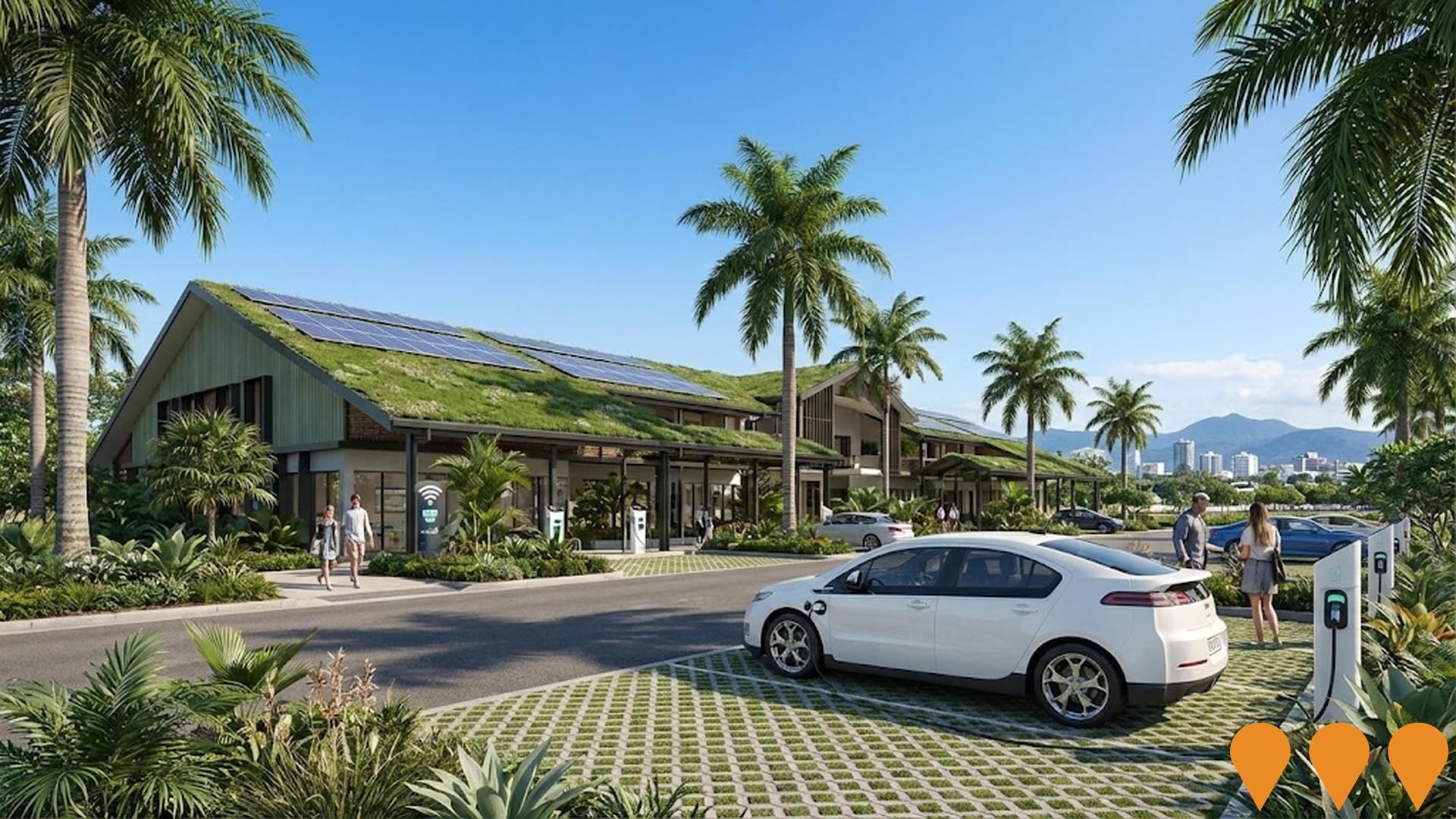Chart Color Schemes
est. as @ -- *
ABS ERP | -- people | --
2021 Census | -- people
Sales Activity
Curious about local property values? Filter the chart to assess the volume and appreciation (including resales) trends and regional comparisons, or scroll to the map below view this information at an individual property level.
Find a Recent Sale
Sales Detail
Population
An assessment of population growth drivers in Yarrabah reveals an overall ranking slightly below national averages considering recent, and medium term trends
Yarrabah's population is approximately 2,659 as of August 2025. This figure represents an increase of 154 people since the 2021 Census, which recorded a population of 2,505. The growth was inferred from ABS estimated resident population data for June 2024 and address validation since the Census date. The population density is 16.7 persons per square kilometer. Yarrabah's growth rate of 6.1% since the 2021 Census exceeds that of its SA3 area, which was 5.2%. Natural growth contributed approximately 97.5% of overall population gains recently.
AreaSearch uses ABS/Geoscience Australia projections for each SA2 area, released in 2024 with a base year of 2022. For areas not covered by this data and years post-2032, Queensland State Government's SA2 area projections are adopted, released in 2023 based on 2021 data. However, these state projections lack age category splits, so AreaSearch applies proportional growth weightings from ABS Greater Capital Region projections released in 2023, based on 2022 data. Future population dynamics predict a significant increase in the top quartile of Australia's regional areas, with Yarrabah expected to grow by 746 persons to 2041, an increase of 28.1% over 17 years.
Frequently Asked Questions - Population
Development
Residential development activity is lower than average in Yarrabah according to AreaSearch's national comparison of local real estate markets
Yarrabah has seen approximately 10 new homes approved annually. Between FY-21 and FY-25, around 53 homes were approved, with none yet approved in FY-26.
On average, about 0.7 new residents per year have arrived for each new home over the past five financial years. This suggests that new construction is meeting or exceeding demand, providing more options for buyers and potentially accelerating population growth beyond current projections. The average value of new homes being built is around $479,000, aligning with broader regional development trends.
Compared to the rest of Queensland, Yarrabah maintains similar construction rates per capita, indicating a balanced market consistent with the wider area. Recent construction comprises 90% standalone homes and 10% townhouses or apartments, preserving the area's low-density nature and appealing to buyers seeking space. This differs from current patterns suggesting 71% detached housing at Census, reflecting robust demand for family homes despite increasing density pressures. The estimated population count of 692 people per dwelling approval reflects Yarrabah's quiet, low-activity development environment. Future projections indicate that the area will add around 746 residents by 2041. Current development appears well-suited to future needs, supporting steady market conditions without significant price pressure.
Frequently Asked Questions - Development
Infrastructure
Yarrabah has limited levels of nearby infrastructure activity, ranking in the 4thth percentile nationally
Ten projects identified by AreaSearch are likely to impact the area, significantly influencing its performance due to changes in local infrastructure, major projects, and planning initiatives. Key projects include the Cairns Smart Green Economy Initiative, Smart water meter program from 2023 to 2026, Leak Detection Program from 2022 to 2025, and CairnsPlan 2016. The following list details those projects likely to be most relevant.
Professional plan users can use the search below to filter and access additional projects.
INFRASTRUCTURE SEARCH
 Denotes AI-based impression for illustrative purposes only, not to be taken as definitive under any circumstances. Please follow links and conduct other investigations from the project's source for actual imagery. Developers and project owners wishing us to use original imagery please Contact Us and we will do so.
Denotes AI-based impression for illustrative purposes only, not to be taken as definitive under any circumstances. Please follow links and conduct other investigations from the project's source for actual imagery. Developers and project owners wishing us to use original imagery please Contact Us and we will do so.
Frequently Asked Questions - Infrastructure
Queensland Energy and Jobs Plan
State-wide renewable energy transformation program delivering large-scale wind, solar, pumped hydro, battery storage and transmission infrastructure. Aims for 70% renewable energy by 2032 and 80% by 2035, supporting 100,000 jobs by 2040 across regional Queensland. Largest clean energy investment program in Australia.

Queensland Energy and Jobs Plan SuperGrid
The Queensland Energy and Jobs Plan is delivering the Queensland SuperGrid and 22 GW of new renewable energy capacity through Renewable Energy Zones (REZs) across the state. Legislated targets are 50% renewables by 2030, 70% by 2032 and 80% by 2035. Key delivery mechanisms include the Energy (Renewable Transformation and Jobs) Act 2024, the SuperGrid Infrastructure Blueprint, the Queensland REZ Roadmap and the Priority Transmission Investments (PTI) framework. Multiple transmission projects are now in construction including CopperString 2032, Gladstone PTI (Central Queensland SuperGrid), Southern Queensland SuperGrid reinforcements, and numerous grid-scale batteries and pumped hydro projects under active development.

Queensland Energy and Jobs Plan
The Queensland Energy and Jobs Plan is a $62 billion+ statewide program to deliver publicly owned renewable energy generation, large-scale battery and pumped hydro storage, and the Queensland SuperGrid transmission backbone. Targets: 50% renewables by 2030, 70% by 2032, 80% by 2035. Multiple projects are now under construction including CopperString 2032, Pioneer-Burdekin Pumped Hydro, and numerous Renewable Energy Zones.

Cairns Smart Green Economy Initiative
Multi-year program led by Cairns Regional Council delivering renewable energy projects, smart waste and water systems, digital connectivity upgrades, EV charging network, and climate resilience infrastructure across the Cairns region.

Bruce Highway Cairns Southern Access Corridor Stage 3 - Edmonton to Gordonvale
Major highway duplication project involving 10.5km upgrade and duplication of the Bruce Highway between Edmonton and Gordonvale. Includes new signalised intersections, bridges at Wrights Creek and Stoney Creek, new overpass south of Maitland Road, realignment of Queensland Rail North Coast Line, and dedicated off-road cycleway. Part of the 15-year Bruce Highway Upgrade Program to improve safety and reduce congestion on this critical freight and tourism corridor. The largest infrastructure project in Far North Queensland history, now completed and operational.

North and Far North Queensland REZs
Queensland is progressing three potential Renewable Energy Zones (REZs) in the North and Far North region: Far North Queensland, Collinsville and Flinders. As at August 2025 these REZs have not been formally declared under the Energy (Renewable Transformation and Jobs) Act 2024. Powerlink Queensland has been appointed as the REZ Delivery Body to develop REZ management plans and lead planning and consultation ahead of any declaration. Government materials indicate early network upgrades south of Cairns to unlock up to 500 MW in the Far North as an initial step, with broader REZ design, access and community engagement to follow.

Queensland National Land Transport Network Maintenance
Program of maintenance and rehabilitation works across Queensland's National Land Transport Network to reduce the significant backlog, improve safety, lift freight efficiency and strengthen network resilience. Focus includes pavement renewal, bridge and culvert repairs, drainage, and road safety treatments delivered under TMR's maintenance programs and QTRIP.

Smart water meter program 2023-2026
Council is replacing existing mechanical water meters with smart water meters throughout the Cairns region to improve the community's water network and achieve overall water savings.

Employment
Employment conditions in Yarrabah face significant challenges, ranking among the bottom 10% of areas assessed nationally
Yarrabah has a balanced workforce comprising both white and blue collar jobs, with essential services well represented. As of June 2025, the unemployment rate is 53.4%.
Compared to Rest of Qld's rate of 3.9%, this is 49.5% higher, indicating room for improvement. Workforce participation in Yarrabah stands at 36.1%, significantly lower than Rest of Qld's 59.1%. Employment among residents is concentrated in health care & social assistance, public administration & safety, and education & training. Notably, public administration & safety employs 4.9 times the regional average.
In contrast, retail trade employs just 1.8% of local workers, below Rest of Qld's 10.0%. The area appears to offer limited employment opportunities locally, as shown by the difference between Census working population and resident population. Between June 2024 and June 2025, labour force decreased by 1.5%, while employment declined by 20.6%, causing unemployment to rise by 11.2 percentage points. In comparison, Rest of Qld experienced employment growth of 1.8% and labour force growth of 2.0%, with a slight rise in unemployment of 0.2 percentage points. Jobs and Skills Australia's national employment forecasts from May 2025 suggest potential future demand within Yarrabah. These projections estimate national employment growth of 6.6% over five years and 13.7% over ten years, but growth rates vary significantly between industry sectors. Applying these industry-specific projections to Yarrabah's employment mix suggests local growth of approximately 7.9% over five years and 16.4% over ten years.
Frequently Asked Questions - Employment
Income
Income metrics place the area in the bottom 10% of locations nationally according to AreaSearch analysis
Yarrabah's median income among taxpayers was $41,380 in financial year 2022. The average income stood at $51,961 during the same period. These figures compare to Rest of Qld's median and average incomes of $50,780 and $64,844 respectively. By September 2025, estimates suggest Yarrabah's median income will be approximately $47,169 and the average will be around $59,230, based on a 13.99% growth in wages since financial year 2022. According to census data, household income ranks at the 17th percentile ($1,254 weekly), while personal income sits at the 1st percentile. Income analysis shows that the $800 - 1,499 bracket dominates in Yarrabah with 31.1% of residents (826 people). This differs from regional levels where the $1,500 - 2,999 category is predominant at 31.7%. Despite modest housing costs allowing for 89.3% income retention, total disposable income ranks at just the 23rd percentile nationally.
Frequently Asked Questions - Income
Housing
Yarrabah is characterized by a predominantly suburban housing profile, with a higher proportion of rental properties than the broader region
The latest Census evaluation of dwelling structures in Yarrabah showed 71.4% houses and 28.6% other dwellings (semi-detached, apartments, 'other' dwellings), compared to Non-Metro Qld's 87.1% houses and 12.9% other dwellings. Home ownership in Yarrabah was at 11.3%, with the remainder either mortgaged (0.7%) or rented (88.0%). The median monthly mortgage repayment was $1,392, higher than Non-Metro Qld's average of $1,300. The median weekly rent in Yarrabah was $150, lower than Non-Metro Qld's figure of $250. Nationally, Yarrabah's mortgage repayments were significantly lower at $1,392 compared to the Australian average of $1,863, while rents were substantially below the national figure of $375.
Frequently Asked Questions - Housing
Household Composition
Yarrabah features high concentrations of family households, with a higher-than-average median household size
Family households account for 85.8% of all households, including 35.8% couples with children, 9.9% couples without children, and 36.2% single parent families. Non-family households constitute the remaining 14.2%, with lone person households at 11.1% and group households comprising 1.9%. The median household size is 4.5 people, which is larger than the Rest of Qld average of 2.4.
Frequently Asked Questions - Households
Local Schools & Education
Yarrabah faces educational challenges, with performance metrics placing it in the bottom quartile of areas assessed nationally
The area's university qualification rates are significantly lower than the Australian average, with 3.4% compared to 30.4%. This disparity presents both a challenge and an opportunity for targeted educational initiatives. Bachelor degrees are the most prevalent at 2.8%, followed by graduate diplomas (0.6%) and postgraduate qualifications (0%). Trade and technical skills are prominent, with 38.1% of residents aged 15+ holding vocational credentials - advanced diplomas (5.2%) and certificates (32.9%).
Educational participation is notably high at 30.6%, including 16.1% in primary education, 10.6% in secondary education, and 0.5% pursuing tertiary education. The area has 4 schools with a combined enrollment of 456 students, comprising 2 primary schools, 1 secondary school, and 1 K-12 school.
Frequently Asked Questions - Education
Schools Detail
Nearby Services & Amenities
Transport
No public transport data available for this catchment area.
Frequently Asked Questions - Transport
Transport Stops Detail
Health
Yarrabah's residents boast exceedingly positive health performance metrics with younger cohorts in particular seeing very low prevalence of common health conditions
Yarrabah's health outcomes show excellent results, particularly among younger age groups who have a very low prevalence of common health conditions. Only approximately 46% (~1,228 people) have private health cover, which is lower than the national average of 55.3%.
The most prevalent medical conditions are diabetes (affecting 8.6%) and heart disease (5.1%). A total of 77.5% report being free from medical ailments, higher than Rest of Qld's 68.1%. As of 2021, approximately 7.8% (~206 people) are aged 65 years or older, lower than the Rest of Qld's 23.6%.
Frequently Asked Questions - Health
Cultural Diversity
The level of cultural diversity witnessed in Yarrabah was found to be above average when compared nationally for a number of language and cultural background related metrics
Yarrabah had a cultural diversity score above the average, with 0.2% of its residents born overseas and 81.6% speaking a language other than English at home. Christianity was the predominant religion in Yarrabah, accounting for 88.8% of the population, compared to 59.2% across the rest of Queensland. The top three ancestry groups in Yarrabah were Australian Aboriginal (89.7%), Other (7.0%), and Australian (1.2%).
The Australian Aboriginal proportion was significantly higher than the regional average of 11.3%, while the Australian proportion was notably lower at 1.2% compared to the regional average of 23.0%.
Frequently Asked Questions - Diversity
Age
Yarrabah hosts a very young demographic, ranking in the bottom 10% of areas nationwide
Yarrabah has a median age of 25, which is significantly younger than the Rest of Qld figure of 41 and substantially under the Australian median of 38. Compared to Rest of Qld, Yarrabah has a higher concentration of 15-24 residents at 18.9%, but fewer 65-74 year-olds at 4.1%. This 15-24 concentration is well above the national figure of 12.5%. Between 2021 and present, the 75 to 84 age group has grown from 1.2% to 2.9% of the population, while the 35 to 44 cohort increased from 11.1% to 12.4%. Conversely, the 45 to 54 cohort has declined from 10.2% to 7.9%, and the 5 to 14 age group dropped from 20.7% to 18.5%. Looking ahead to 2041, demographic projections show significant shifts in Yarrabah's age structure. The 25 to 34 age cohort is projected to rise substantially, increasing by 232 people (56%) from 414 to 647. Meanwhile, numbers in the 5 to 14 age range are expected to fall by 12.


